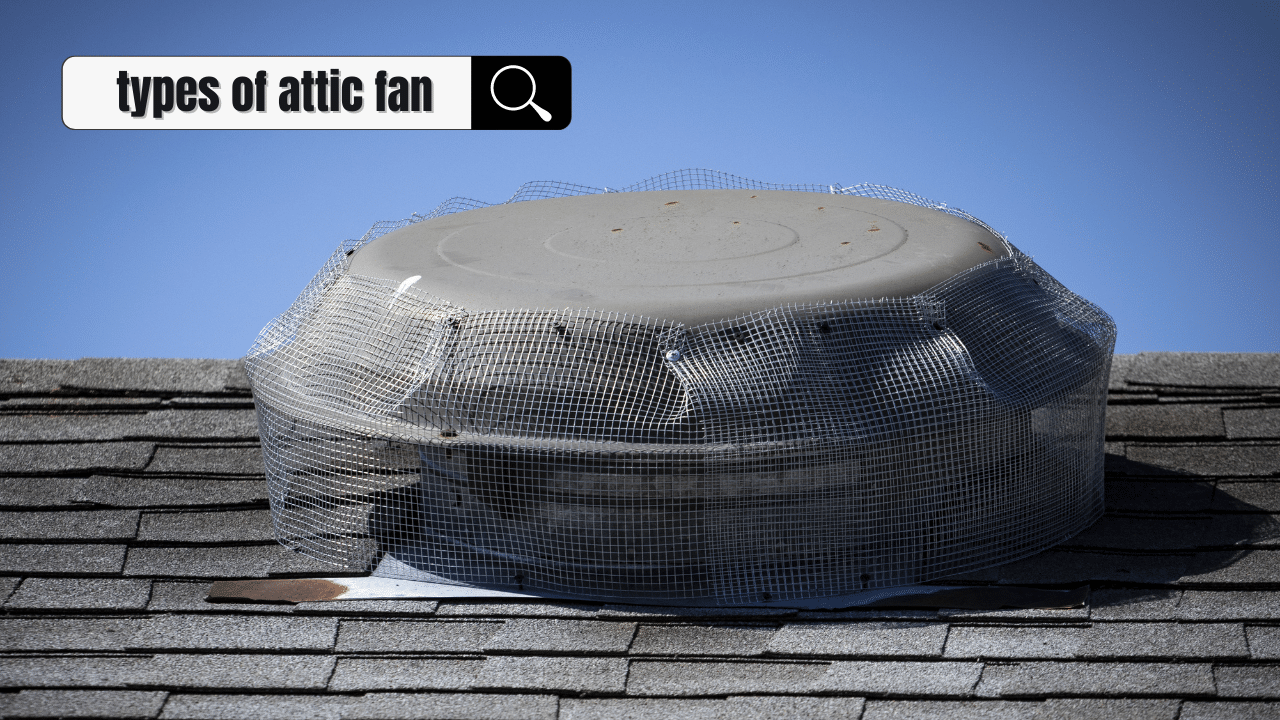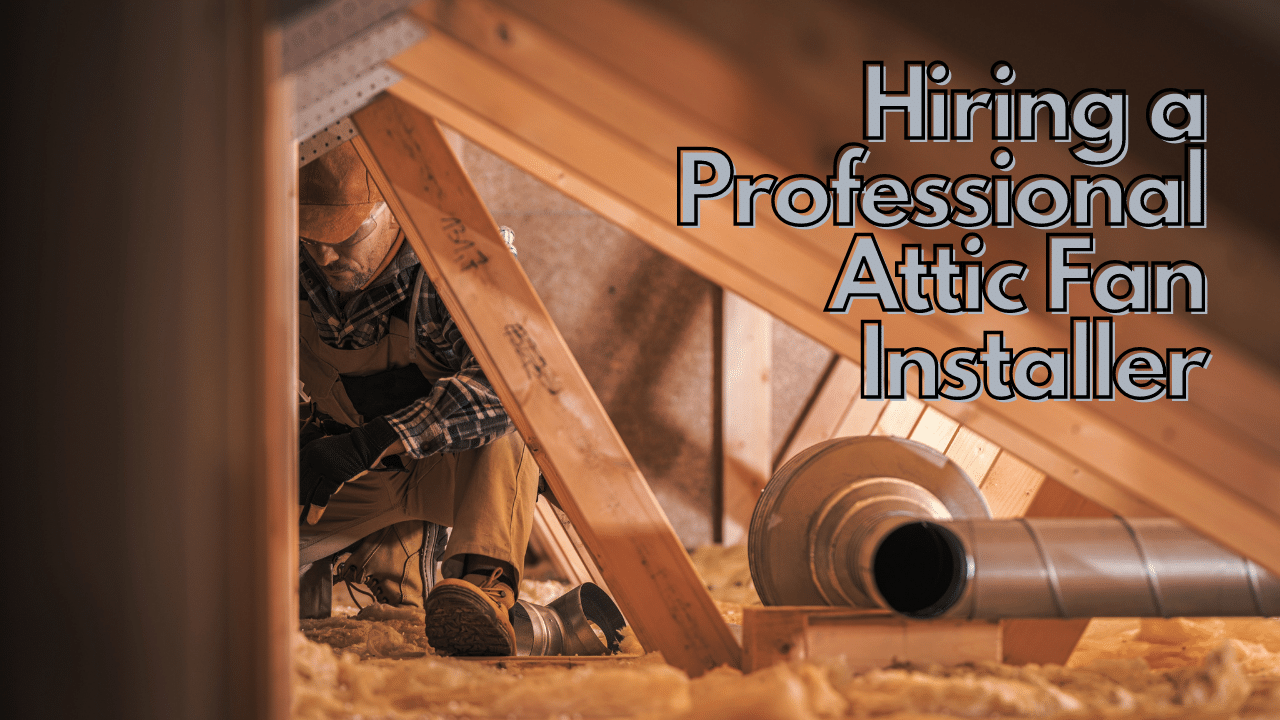In the summer months, excessive heat may only collect in your attic space – compromising your comfort and causing your home energy bills to increase (or remain high). An attic fan is a relatively low cost solution that can pull the hot air out of the attic lowering your interior temps. As a rule of thumb an attic fan can lower attic temperatures by degrees which leads to about a 10 degree difference in your living area.
Expect installing a roof turbine attic fan on a 1900 sqft house (needed 1900 CFM) to cost $500-600 or an electric fan to cost $800 - $1,000. Read below to learn about the types of attic fans. There are various types of attic fans (in different sizes) to meet other home needs. Note that certain fan types may only increase the project’s associated costs.
Total expenses are also dependent on several factors, including permits, chosen material, and wiring. The cost to install a whole house attic fan is a worthwhile investment if you think about its benefits in cooling your home during scorching days.
Additionally, these fans can also pull the moisture and odors away from home. It increases the lifespan of your roofing in the process.
Factors Affecting Attic Fan Installation Costs
In setting your budget for attic fan installation costs, first, determine where your money gets spent so you can figure out various saving opportunities. Suppose you can afford a little more budget. In that case, you may even include some additions or enhancements.
Let’s discuss some of the most defining variables that may affect the total project costs:

Type of Attic Fan
Generally, five different attic fan types range from $115 to $1,150. It includes passive, turbine, exhaust, electric, solar, and dual-powered attic fans.
Note that every type of fan entails unique installation requirements, which may then hike up the costs. For instance, attic electric fan installation will cost you more than other options as it will require you to seek the services of a carpenter and electrician. This attic fan type is also typically installed in the roof or gable, making it more expensive.
Here’s a quick rundown of the five different types of attic fans and their average costs:
Attic Fan Type | Average Costs |
|---|---|
Passive Fan | $86 - $115 |
Roof Turbine | $115 - $172 |
Attic Exhaust Fan | $115 - $517 |
Electric Attic Fan | $115 - $517 |
Solar Fan | $345 - $1,150 |
Dual Powered Fan | $345 - $1,150 |
Fan Location
Another critical factor is the location of the attic fan to be installed. It usually comes in three areas: roof, ridgeline, and gable. Depending on your preferred location, you may have cheaper installation costs, especially if the easy process doesn't require too much labor and materials.
Gable is the most accessible location to install an attic fan, while ridge vent and roof-mounted sites may be more expensive as it has a complicated process.
Refer to the table below to overview the three common attic fan locations and their average installation costs.
Location of Attic Fan | Average Costs |
|---|---|
Gable | $86 - $517 |
Roof | $345 - $1,150 |
Ridge Vent | $345 - $1,150 |
Materials
Aside from the upfront costs of the attic fan unit itself (at $65 to $650), you may also need to shell out on a couple of installation supplies such as the following:
Attic Fan Size
To pick the correct fan size for your attic needs, you will need to measure the total length of the attic and the square footage of the property.
If you have a steep roof, you will typically need 15 percent increased CFM or Cubic Feet per Minute than a home without a pitched roof. Don't worry. While all of this may sound confusing, your contractor can assist you in determining the ideal size for your attic.
Refer to the table below for a breakdown of recommended airflow (CFM) for every attic size.
Size of Attic | Recommended Airflow |
|---|---|
1,000 Square Feet | 700 CFM |
2,000 Square Feet | 1,400 CFM |
3,000 Square Feet | 2,100 CFM |
Labor Costs
Most roof and roof ridge-mounted fans will require you to seek a roofing expert, with the hourly rate starting from $52 to $86. If there are no complications with the installation process, you can expect it to be completed after two hours.
Meanwhile, a gable-mounted unit may require you to modify a vent. It will cost you around $80 per hour for a minimum of two hours of work. Homeowners planning to install electric and solar attic fans must hire an electrician to handle all the wiring. The hourly labor rates start at $75 to $97.
Extra Additions
If you have the room for an extra budget, consider these popular additions to ensure you'll make the most out of your newly installed attic fans.
You'll never go wrong with these additions, according to home remodeling experts.
Automatic Shutters
Placing automatic shutters when you have just installed your attic fan may cost you an additional $57 to $92. It will allow the device to open or shut by itself, depending on whether the attic fan is running or not.
It offers the benefits of having better ventilation by effectively releasing heat and gathering cool air, and it also keeps rodents and pests out of your attic's space.
Roof Fan Cap
On average, a roof fan cap can cost $57, and it is placed above the attic fan or roof vent. It has various convenient purposes, such as keeping rain and other debris out of your attic. (Related: Mold In Attic: The Causes & Solutions Homeowners Need To Know About) Additionally, it also serves as a barrier to block unwanted pests from entering the space. A roof fan cap adds a more finished sleek appearance on the roof.
Attic Fan Humidistat
The average installation cost of an attic fan humidistat is around $57 to $115. The humidistat functions the same way as a thermostat, but it measures the humidity level of your attic instead of temperature.
This device can help you have better control over your attic's moisture level, so you won't have to encounter mold and moisture problems.
Attic Fan Thermostat
Expect to spend around $172 to $460 for an attic fan thermostat installation. It effectively measures your attic's temperature, which allows you to know if the fan is working well or not.
You can buy different varieties of styles and can choose between manual and programmable thermostats. Other thermostats can be controlled just by a swipe of your hand through an app on your smartphone.

Should I Hire a Professional Attic Fan Installer?
Homeowners with the right experience, skills, tools, and time to do the job can opt for a DIY passive attic fan installation. However, we strongly advise shelling out on professional labor costs to ensure the installation is done correctly and safely.
There is no need to put yourself at risk of danger when a professional can do it for you flawlessly. Installing an attic fan is not a beginner-friendly project. Even trained professionals take some time to set up these fans right where they belong.
Should you plan to install an electric-powered fan, you will be required to consult an electrician for proper electrical installation and wiring. It is something you will need to consider an investment– as it guarantees the safety of all the occupants in your home.
Final Thoughts
To answer the question of "Are attic fans truly worth it?" requires finding out to decide for yourself. Several homeowners swear by them, but others remain skeptical.
Depending on your goals, you can count on an attic fan installation to offer energy savings at the very least. Manage your expectations, though. The cost cut won't be as substantial as attic insulation or air sealing.
If you simply want to add ventilation for improved comfort and roof protection, installing an attic fan will genuinely make a difference!
